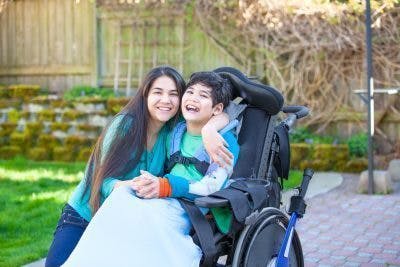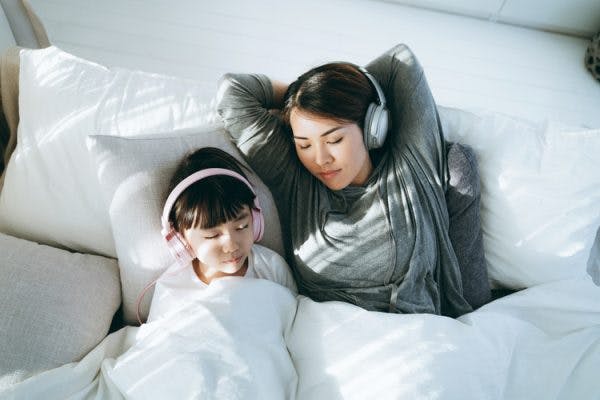Do you know what the main differences between cerebral palsy and Parkinson’s disease are?
Both are neurological disorders, but they affect individuals at very different times in their lives.
This article will help you differentiate the causes, symptoms, and management of cerebral palsy vs Parkinson’s.
Understanding Cerebral Palsy
Cerebral palsy is a movement disorder caused by damage to the brain before or during birth, or in early childhood.
The brain damage that causes cerebral palsy will not get worse over time; however, CP is a lifelong disability. Without proper management, motor impairments caused by cerebral palsy may become worse.
Symptoms of Cerebral Palsy

Cerebral palsy is a spectrum disorder that describes a wide range of motor impairments caused by damage to the developing brain.
Symptoms will vary depending on the location and severity of the damage.
There are 4 main types of cerebral palsy:
- Spastic. Up to 80% of individuals with cerebral palsy have this type of CP. It’s caused by damage to the motor cortex and primarily characterized by stiff movements caused by spasticity (involuntary muscle contractions). Spasticity may affect the whole body, primarily the legs or one side of the body, or even just one limb.
- Dyskinetic. This type of CP is caused by damage to the basal ganglia and primarily characterized by uncontrollable movements.
- Ataxic. This type of CP is caused by damage to the cerebellum and primarily characterized by poor balance and coordination.
- Mixed. When symptoms of 2 or more types of CP are present, multiple areas of the brain that affect movement may have been damaged.
Secondary to these primary conditions, individuals with cerebral palsy may also experience:
- Speech difficulties
- Hip dislocation
- Scoliosis or poor posture
- Pain
- Respiratory complications
- Feeding difficulties
- Digestive problems
- Incontinence issues
- Sleeping difficulties
- Behavior problems
Cerebral Palsy Management

While the brain damage that causes cerebral palsy cannot be reversed, it also will not worsen over time.
Management for cerebral palsy will require a personalized approach that focuses on the individual’s specific symptoms.
Frequently used management interventions for cerebral palsy include:
- Physical therapy. PT for cerebral palsy focuses on improving movements through exercise. This can involve stretching tight muscles to improve range of motion, strengthening underused muscles, and reducing the excitability of spastic muscles with frequent stimulation. Physical therapy can also include specialized gait training for those with difficulty walking.
- Occupational therapy. OT for cerebral palsy typically involves teaching individuals how to perform activities of daily living like dressing, getting out of bed, or using mobility aids like wheelchairs and walkers. Occupational therapists also may focus on fine motor skills if they have been affected.
- Speech therapy. Individuals with speech or feeding difficulties can go to speech therapy to strengthen their oral muscles, improve their speech, and learn alternative forms of communication.
- Orthotics. Orthotics like braces and splints will help promote musculoskeletal alignment and lightly stretch spastic muscles.
- Medications. Muscle relaxers and nerve blocks can help reduce high muscle tone so that individuals can focus on improving their movements.
- Surgery. Because of its invasive nature, surgery is typically only suggested when all other management interventions prove ineffective. Surgery for cerebral palsy typically involves manual muscle lengthening or nerve incisions.
Understanding Parkinson’s
Parkinson’s disease is also a neurological movement disorder.
It’s caused by the degeneration of dopamine-producing neurons in a part of the basal ganglia called the substantia nigra.
Dopamine plays an important role in reward perception and movement. Low levels of dopamine make it difficult to control movements.
It’s not yet understood why these cell deaths occur.
Parkinson’s gets more common with increasing age. Generally, individuals are diagnosed with Parkinson’s in their 50s and 60s; however, some diagnoses are made before age 50.
Unlike cerebral palsy, Parkinson’s is progressive, and its symptoms can slowly worsen over time.
Symptoms of Parkinson’s

Symptoms of Parkinson’s can vary from person-to-person depending on how long they’ve had the disease and how quickly it progresses.
The most common symptoms of Parkinson’s include:
- Tremors (specifically at rest; tremors typically get better with movement)
- Rigidity (stiff muscles)
- Bradykinesia (slow movements)
- Weakness in the facial muscles
- Postural instability
- Difficulties performing fine motor tasks like writing
Non-motor problems may develop in later stages of Parkinson’s. Non-motor problems include:
- Memory loss (about 1/3 of people with Parkinson’s develop Parkinson’s dementia within 12 years of their Parkinson’s diagnosis)
- Sleep problems
- Behavioral and mood changes like depression
Parkinson’s Management

There is currently no treatment to reverse or prevent the neural degeneration that causes Parkinson’s.
However, there are ways to manage your symptoms and improve your quality of life.
The first line of treatment for Parkinson’s is using medications that will increase dopamine levels in the brain.
The most common medications for Parkinson’s are Levodopa and dopamine agonists.
Dopamine cannot pass through the blood-brain barrier; however, Levodopa can. Once inside the brain, Levodopa converts into dopamine.
Dopamine agonists act similarly to dopamine and stimulate the dopamine receptors in the brain.
They aim to increase the levels of dopamine that reach the brain and stimulate parts of the brain where dopamine works.
Other management interventions for Parkinson’s include:
- Physical Therapy. PT for Parkinson’s focuses on helping individuals maintain their maximum level of independence and mobility through exercise.
- Occupational Therapy. OT will focus on teaching individuals with Parkinson’s how to adjust so that they can perform activities of daily living on their own.
- Speech Therapy. Individuals who experience facial weakness, vocal projection, or feeding problems because of Parkinson’s can benefit from going to speech therapy. There, a speech-language pathologist will guide you through exercises and techniques to improve oral functions like speaking, chewing, and swallowing.
- LSVT Big and Loud. The LSVT Big and LSVT Loud programs were developed specifically for Parkinson’s disease treatment and are used by certified physical, occupational, and speech therapists. LSVT Big focuses on using large, exaggerated movements to allow individuals to move more normally. Alternatively, the focus of LSVT Loud is vocal projection, which allows those with Parkinson’s disease to be heard more easily and communicate more effectively.
- Deep Brain Stimulation. Deep brain stimulation involves inserting an electrical implant onto the brain that stimulates brain activity. This treatment will not work for everybody but can help reduce slow movements and tremors for some.
Cerebral Palsy vs Parkinson’s
So now that you know the basics of cerebral palsy and Parkinson’s, let’s compare the two side by side.
Cerebral palsy and Parkinson’s are both neurological conditions that affect movement.
However, cerebral palsy is caused by damage to the developing brain very early in life while Parkinson’s develops in late adulthood.
CP is most commonly caused by damage to the motor cortex. Parkinson’s is the result of neuron degeneration in the basal ganglia.
Unlike individuals with cerebral palsy (who are born with or have had their motor impairments since early childhood), individuals with Parkinson’s will notice their movements getting worse over time.
Luckily, both conditions can be effectively managed to maximize functional abilities and quality of life.
That’s a wrap! Hopefully, this article helped you better understand the similarities and differences of cerebral palsy vs Parkinson’s.











